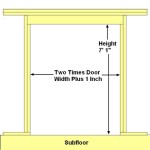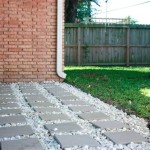How Much Does It Cost To Make A Stone Patio?
Constructing a stone patio can significantly enhance the aesthetic appeal and usability of outdoor living spaces. However, understanding the costs associated with such a project is crucial for effective budgeting and planning. The overall expense can vary widely depending on several factors, including the type of stone used, the patio's size, site preparation requirements, and labor costs. This article will examine these factors in detail to provide a comprehensive overview of the potential cost of building a stone patio.
Estimating the cost of a stone patio begins with understanding the material expenses. Stone, being the primary component, contributes significantly to the overall budget. Different types of stone possess varying price points, influenced by their availability, durability, aesthetic qualities, and ease of installation. Careful consideration of these aspects is essential in selecting the appropriate stone for a specific project.
Stone Material Costs: A Breakdown
The cost of stone varies significantly. Flagstone, a popular choice for patios due to its natural, irregular shapes and textured surface, typically ranges from $2 to $8 per square foot. The price fluctuation is largely due to the source of the flagstone and the specific type. For instance, locally sourced flagstone is generally more affordable than varieties transported from distant quarries.
Pavers, which are manufactured stones, offer a more uniform appearance and are often easier to install. Concrete pavers, a budget-friendly option, usually cost between $3 and $6 per square foot. They are available in a wide range of colors, shapes, and sizes, offering versatility in design. However, they may not possess the same natural aesthetic as flagstone or other natural stone options.
Brick is another commonly used material for patios. Its classic appearance and durability make it a popular choice. Brick pavers typically cost between $4 and $8 per square foot. The price can vary depending on the type of brick (e.g., clay brick, concrete brick) and the specific manufacturer.
More expensive options include bluestone and granite. Bluestone, known for its elegant blue-gray hue, can range from $8 to $15 per square foot. Its durability and refined appearance make it a desirable, though pricier, alternative. Granite, renowned for its exceptional durability and resistance to weathering, can cost upwards of $10 to $20 per square foot. Its high cost often limits its use to smaller patios or accent areas.
Furthermore, understanding the amount of stone needed is critical. This requires accurate measurements of the patio area and accounting for potential waste during the cutting and installation process. It is generally recommended to order approximately 10% more stone than the calculated area to accommodate for cuts and breakage. This buffer helps avoid delays and ensures the project can be completed efficiently.
Beyond the primary stone material, the cost of other materials must be considered. These include base materials like gravel or crushed stone, which provide a stable foundation for the patio. Polymeric sand, used to fill the joints between the stones, helps prevent weed growth and stabilizes the surface. Landscape fabric, placed beneath the base material, prevents weeds from growing up through the patio. These ancillary materials can add several hundred dollars to the overall cost, depending on the size of the patio and the specific materials used.
Site Preparation and Labor Costs
Site preparation is a crucial aspect of patio construction and can have a significant impact on the overall cost. Proper site preparation ensures the patio is level, stable, and free from drainage issues. The extent of site preparation required depends on the existing ground conditions. In some cases, minimal excavation and leveling may be sufficient. However, in other situations, extensive excavation, grading, and soil compaction may be necessary.
Excavation typically involves removing topsoil, vegetation, and any other debris from the area where the patio will be built. The depth of excavation depends on the type of base material used and the desired height of the patio. Generally, an excavation depth of 6 to 12 inches is sufficient for a standard stone patio. Excavation costs can range from $1 to $4 per square foot, depending on the depth of excavation and the ease of access to the site. If heavy equipment is required, such as a backhoe or skid steer, the cost may be higher.
Grading involves leveling the excavated area to ensure a uniform surface. Proper grading is essential for preventing water from pooling on the patio and ensuring that the stones are laid evenly. Grading costs typically range from $0.50 to $2 per square foot. If the existing ground is significantly sloped, more extensive grading may be required, increasing the cost.
Soil compaction is another important step in site preparation. Compacting the soil helps create a stable base for the patio, preventing settling and shifting over time. A plate compactor is typically used to compact the soil. Soil compaction costs typically range from $0.25 to $1 per square foot.
Labor costs are another significant factor in the overall cost of a stone patio. Hiring professional installers can ensure that the patio is constructed correctly and efficiently. Labor costs vary depending on the location, the complexity of the project, and the experience of the installers. Generally, labor costs range from $5 to $15 per square foot. More experienced installers may charge higher rates, but they may also be able to complete the project more quickly and efficiently.
The complexity of the patio design can also impact labor costs. A simple rectangular patio will typically be less expensive to install than a more complex design with curves or intricate patterns. The type of stone used can also affect labor costs. Some stones, such as irregularly shaped flagstone, are more difficult to install and may require more time and effort.
When obtaining quotes from contractors, it is important to get a detailed breakdown of the labor costs. The quote should specify the hourly rate or the total cost for labor, as well as the estimated number of hours required to complete the project. It is also important to ask about any additional fees, such as travel expenses or disposal fees for waste materials.
Additional Cost Considerations
Several other factors can influence the cost of building a stone patio. One consideration is accessibility to the site. If the patio area is difficult to access, such as in a backyard with limited access points, it may be necessary to transport materials by hand or use specialized equipment. This can increase labor costs and potentially add to the overall project expense.
Permits may be required for patio construction, depending on local regulations. The cost of permits varies depending on the municipality and the size of the patio. It's vital to check with local building departments to determine whether permits are required and to obtain the necessary approvals before starting construction. Failure to obtain necessary permits can result in fines and delays.
Drainage is another important consideration. If the patio area is prone to water accumulation, it may be necessary to install drainage systems, such as French drains or catch basins. Drainage systems can add to the overall cost of the project, but they are essential for preventing water damage and ensuring the longevity of the patio.
Lighting and other features can also increase the cost of a stone patio. Installing landscape lighting can enhance the aesthetic appeal of the patio and extend its usability into the evening hours. Adding features like outdoor fireplaces, fire pits, or built-in seating can also create a more inviting and functional outdoor living space. However, these additions can significantly increase the overall cost of the project.
Maintenance costs should also be considered when budgeting for a stone patio. Stone patios require periodic cleaning and maintenance to keep them looking their best. This may involve power washing, resealing, or replacing damaged stones. The frequency and cost of maintenance will depend on the type of stone used and the level of exposure to the elements. Factoring in these costs can help ensure the long-term viability of the investment.
In summary, determining the cost to construct a stone patio involves a comprehensive assessment of material, labor, and site-specific factors. Careful consideration of these elements enables homeowners to create a realistic budget and plan for the project effectively. By understanding these cost drivers, individuals can embark on their stone patio construction journey with confidence.

How Much Does A Patio Cost Installation 2024 Landscaping Network

Average Flagstone Patio S In 2024 Forbes Home

How Much Does A New Patio Cost To Build

How Much Does It Cost To Build A Patio Forbes Home

2024 Patio Cost Average To Build And Install A Angi

How Much Does A Stone Patio Cost 2024 S

Cost To Install A Patio 2024 Calculator

Value Vs Cost To Install A Paver Or Natural Stone Patio In Reading Lancaster Pa

How Much Does A Patio Cost Installation 2024 Landscaping Network

How Much Does A New Patio Cost To Build
Related Posts








